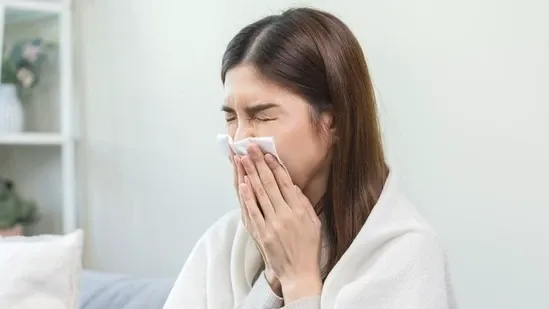Sneezing frequently? Pulmonologist says it can be dust allergy; shares 5 symptoms to know and ways to prevent
admin | August 26, 2025 11:22 PM CST

Dust is unavoidable, indoors or outdoors, but excessive exposure can easily trigger allergic reactions. In an interview with HT Lifestyle, Dr. Kuldeep Kumar Grover, head of critical care and pulmonology, CK Birla Hospital, Gurugram said, "For some people, exposure to dust can trigger allergic reactions, most often due to dust mites, tiny organisms that thrive in bedding, upholstered furniture, and carpets.
Recognising the early signs and addressing them promptly can make daily life more comfortable." Ayurvedic remedies to get relief from dust allergy
The pulmonologist further shared some common symptoms of dust allergy:
1. Frequent sneezing:
If you have spells of sneezing, especially in the mornings or when you are cleaning, it could be your body's mechanism for expelling dust particles from the nostrils.
2. Stuffy or runny nose:
Dust mites might irritate nasal tissues, resulting in chronic stuffiness or a runny nose. These conditions tend to worsen in cramped, poorly aerated spaces.
3. Red, watery eyes:
Redness, itching, and profuse watering of the eyes usually accompany nasal symptoms when dust allergens are involved.
4. Coughing and wheezing:
Inhaling dust can trigger bouts of coughing or wheezing, particularly in asthmatics. If your symptoms are better out of doors but worse indoors, dust is probably responsible.
5. Symptoms intensify at home:
If symptoms worsen at home, most noticeably in the bedroom, it may be a sign of dust mites nesting in mattresses, pillows, curtains, or carpets.
 Tips to deal with dust allergy:
Tips to deal with dust allergy:
 Tips to deal with dust allergy:
Tips to deal with dust allergy:
- Clean regularly: Use a damp cloth to trap dust rather than spreading it into the air.
- Wash bedding weekly: Wash sheets and pillowcases in hot water and dry completely to kill mites.
- Use protective covers: Allergen-proof encasings on mattresses and pillows can minimise exposure.
- Enhance air quality: Ventilate rooms well and try HEPA filter-based air cleaners.
- Reduce clutter: Less stuff means less room for dust to settle.
READ NEXT
-
Vivo T4 Pro 5G With 90W Fast Charging Launched In India: Price, Specifications, Sale Date

-
Renault Kiger facelift vs Nissan Magnite: Which affordable sub-4 metre SUV to pick?

-
Taylor Swift gets engaged to Travis Kelce after 2 years of dating- See first pics

-
Asia Cup 2025: Check Full Schedule, Venue, Squad Details & Match Timings

-
Asia Cup 2025: Check Full Schedule, Venue, Squad Details & Match Timings
